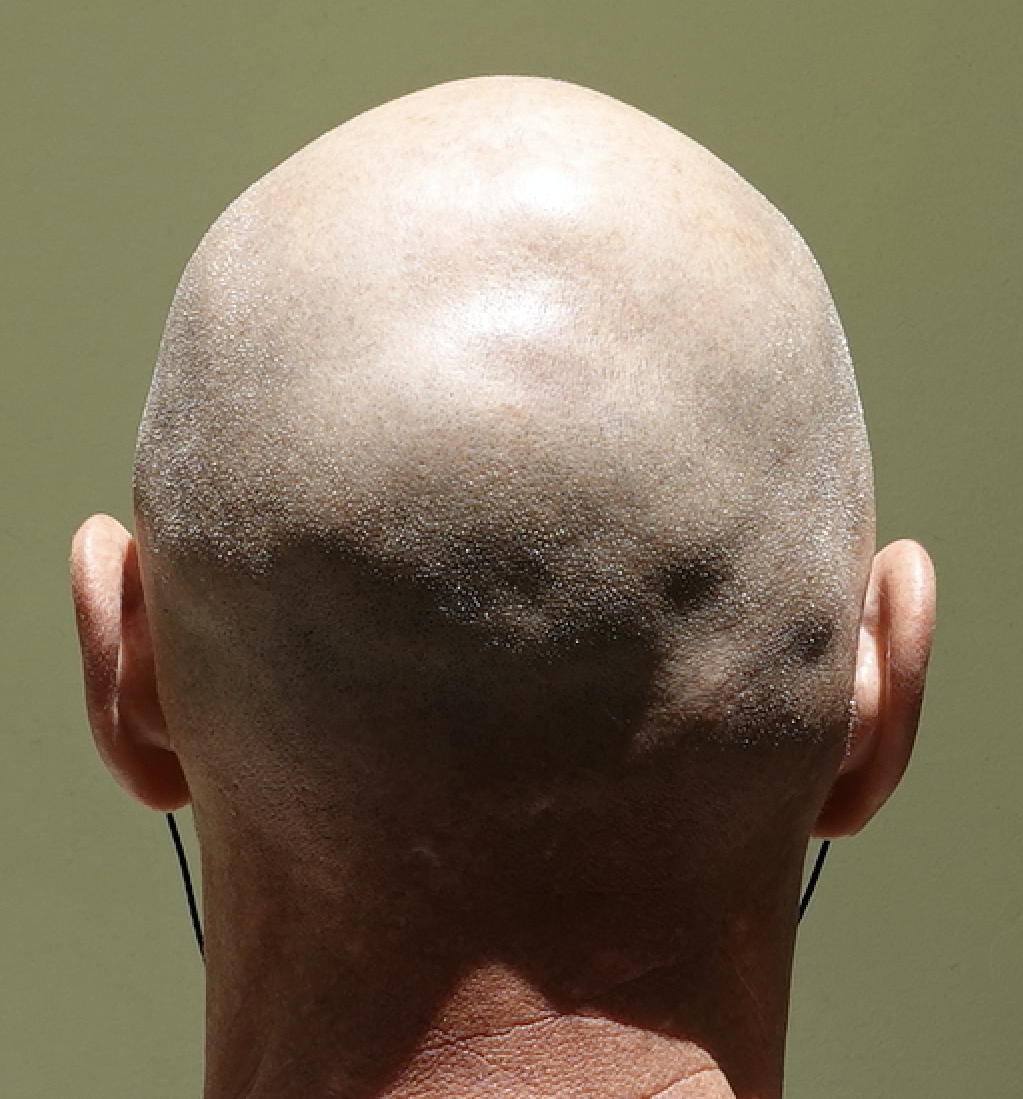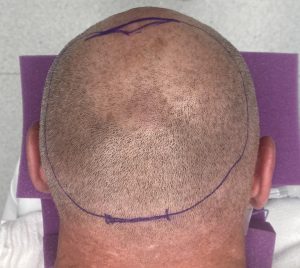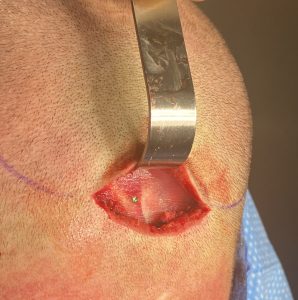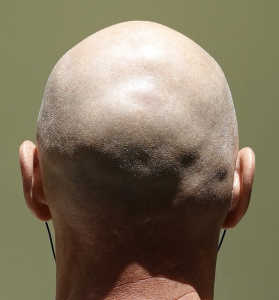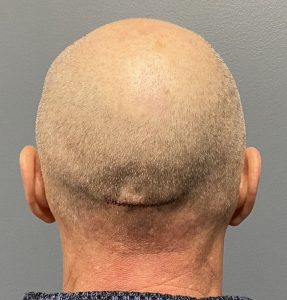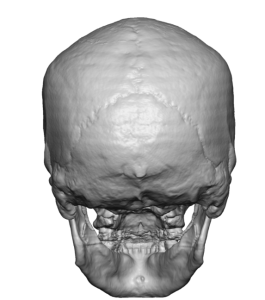
Besides this three piece bone union on the back of the head the shape it acquires is also influenced by the open posterior fontanelle that is present after birth. The closure of the posterior fontanelle and how well it ossifies is also a major influence on the surrounding skull shape.
Combining these complex bony interfaces, sutures lines and original posterior fontanelle location it is no surprising that the back of the head is the most potentially non-smooth asymmetric skull surface. While these surface contour irregularities may be aesthetically irrelevant in a female with hair. In a shaved head male, however, every surface contour irregularity can fully be seen regardless of the thickness of the scalp. Some males so affected may desire a smoother more even back of head shape.
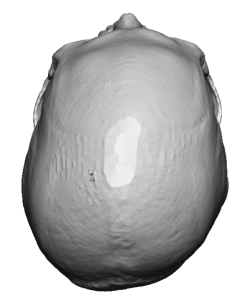


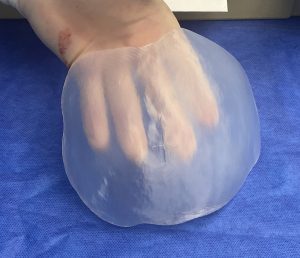

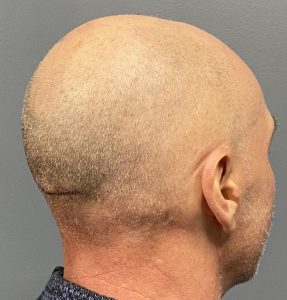
Key Points:
1) The back of the head is most affected by lack of projection and contour irregularities.
2) Recontouring the back of the head can be done by a thin custom made skull implant that covers its entire surface.
3) Placement of a thin skull implant is technically challenging because it is more prone to edge irregularities and lack of complete unfolding.
Dr. Barry Eppley
World-Renowned Plastic Surgeon

